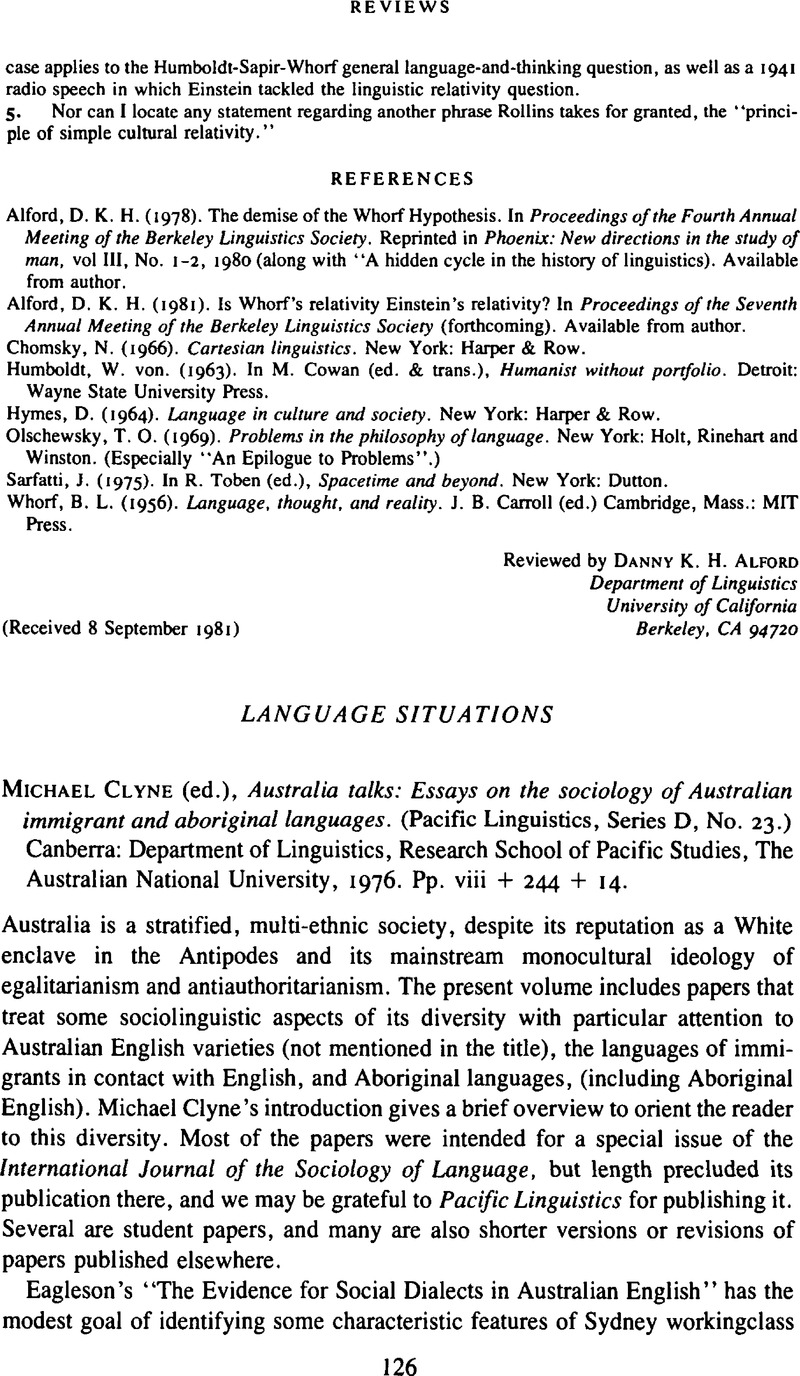Sutton, P. &
Rigsby, B. (
1979). Linguistic communities and social networks on Cape York Peninsula. In
Wurm, S. (ed),
Australian linguistic studies. (Pacific Linguistics, Series C, No. 54).
Canberra:
Department of Linguistics, Research School of Pacific Studies, The Australian National University.
Google Scholar 